Look out of any window, walk along the beach, hike through any of our Outer Banks nature preserves and birds are everywhere. Not the large shorebirds of the sea and estuaries. Not the migratory waterfowl that flock to the sound.
In this case it’s all those little birds that flit from branch to branch, giving the eye just a quick glimpse of them as they twitter away.
We can’t write about all of them, but we think we’ve put together a good sample list of some that are most common on the Outer Banks.
Northern Cardinal
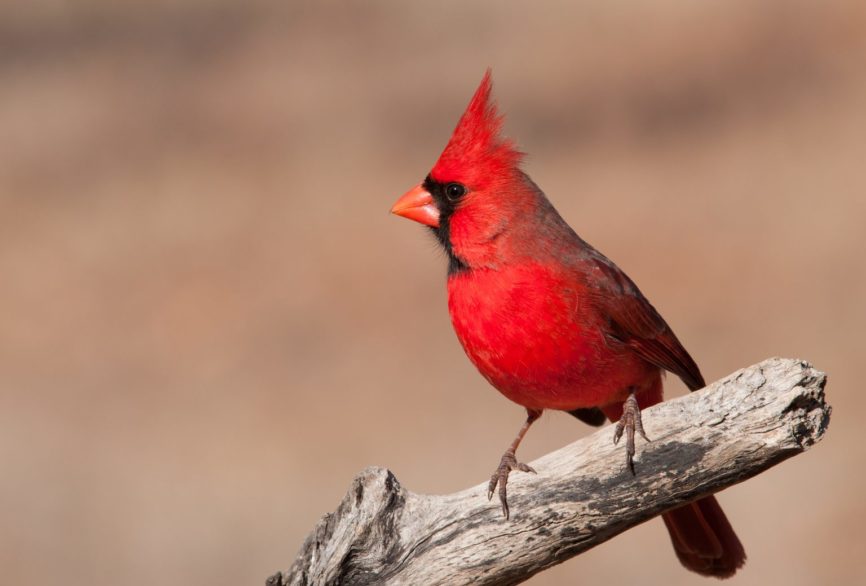
We have to start with the Northern Cardinal because it’s the North Carolina state bird.
The male cardinal with its scarlet red feather and peaked crest of its head, make it unmistakable. The female is more subtly colored with tawny brown feathers and a touch of red in her wing feathers.
Favoring low shrubs and dense underbrush, they are not quite as likely to be seen in the forest as other birds. Cardinals are not shy at all about using a backyard feeder. They will eat almost anything, but sunflower seeds seem to be their favorite.
Cardinals are year-round birds on the Outer Banks.
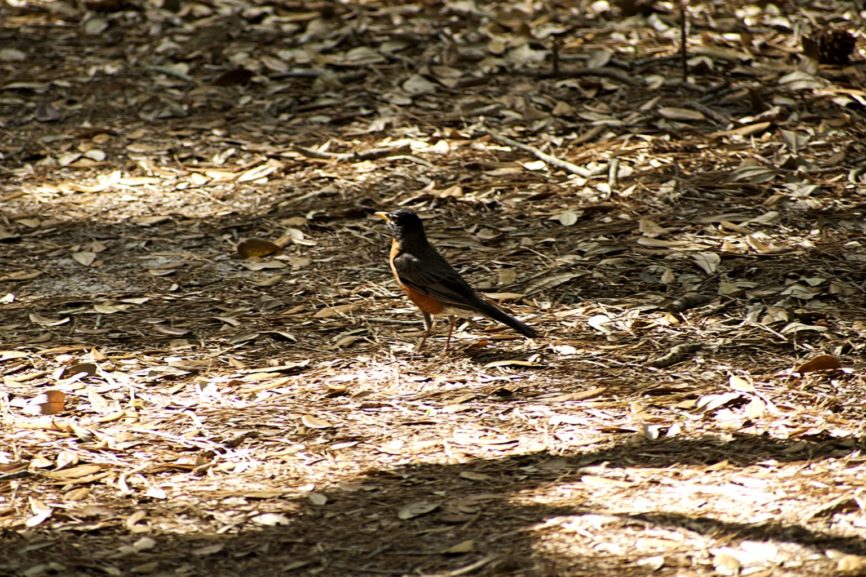
A member of the thrush family, the American Robin was named after the European Robin—known as a robin redbreast in England. It is not, however, related to the European robin.
This may be the most commonly seen bird along the Outer Banks. Especially in the winter, Robins seem to like our coastal climate, although they are spotted year-round.
Red-winged Blackbird
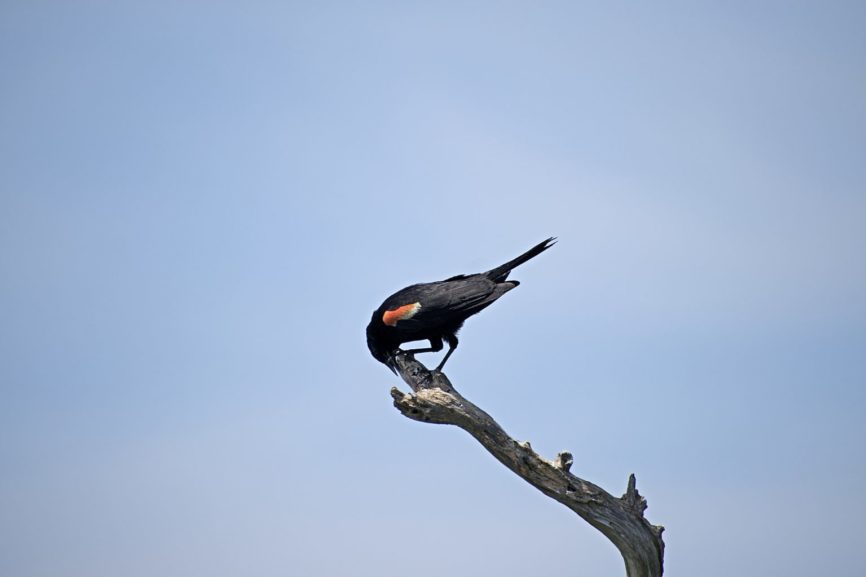
A really beautiful bird with a black body and a striking red stripe on its wing with a touch of yellow in it. The male is what is usually seen. Female Red-Winged Blackbirds are a mottled brown with a little bit of yellow by their eyes.
Favoring marshes and fresh to slightly brackish water for nesting, the Outer Banks is considered an ideal place to spot them. Look for them in any area that borders a marsh or has dense reeds or swamp grasses.
Blue Jay
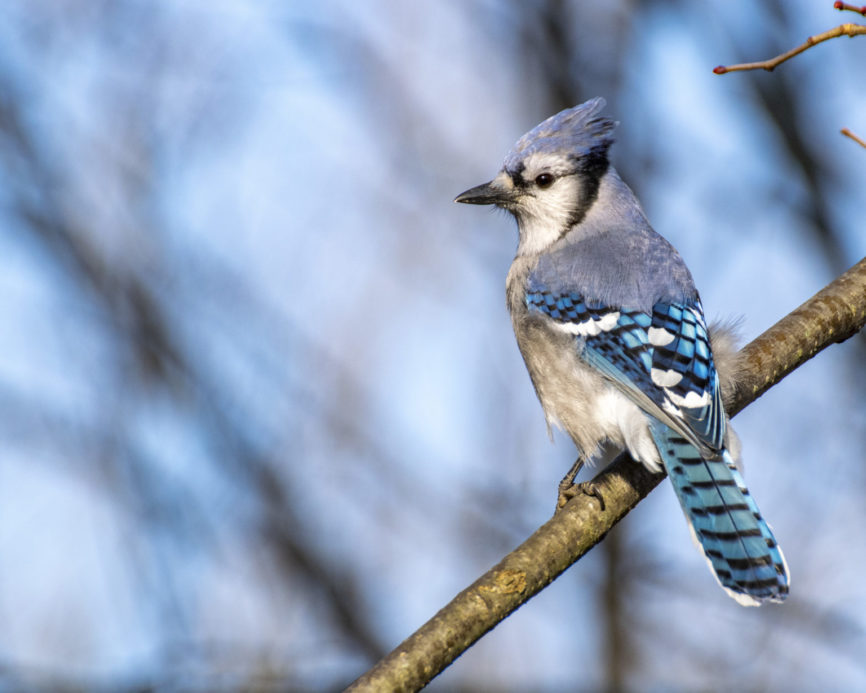
With their striking blue color and raucous “jay, jay, jay” caw, blue jays are one bird that can’t be missed. A member of the crow family, like crows, they are intelligent and adaptable.
Although known for their distinctive caw, studies have shown they have the ability to mimic a number of bird sounds, including the sound of a hunting hawk. It’s unclear if that is a warning to other blue jays or is being used to frighten other birds away.
On the Outer Banks they are more common in spring, summer and early fall.
Carolina Wren
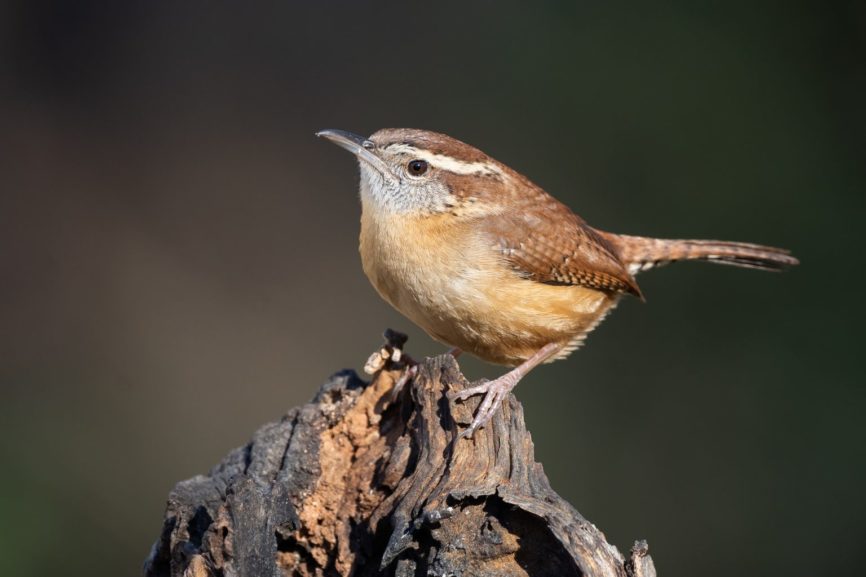
Perhaps the most colorful of the wren family with its pale-yellow belly and mottled brown and white feathers, the Carolina Wren hangs out on the Outer Banks all year long. But good luck spotting one.
They are very quick little birds, flitting among the leaves and underbrush in forests.
Their song is what usually gives their location away. The Carolina Wren is considered one of the loudest of the songbirds, even though it is one of the smallest. It’s the male that is making all the noise.
Carolina Wrens often mate for life, and the couple will sing duets at times, with the male singing loudly and the female filling in some notes.
Red-bellied Woodpecker

A beautiful medium sized bird, when a Red-bellied Woodpecker is seen, there is little doubt about its identification. The head is a brilliant red with a pattern of black and white feather on its wing and back.
Red-bellied Woodpeckers are usually spotted in trees, either on a higher branch or along the trunk, making it difficult to see their belly, which has orange-red feathers mixed in with white.
The species is considered somewhat uncommon along the Outer Banks, but there is no doubt they are around, particularly in our maritime forests. Especially in the spring, the sound of woodpeckers drumming into trees can be clearly heard as male woodpeckers establish their territory and send out a mating call.
Later in the season, woodpeckers will occasionally hammer into a tree trunk with their bill, but at that time they’re looking for a meal.
Purple Martin
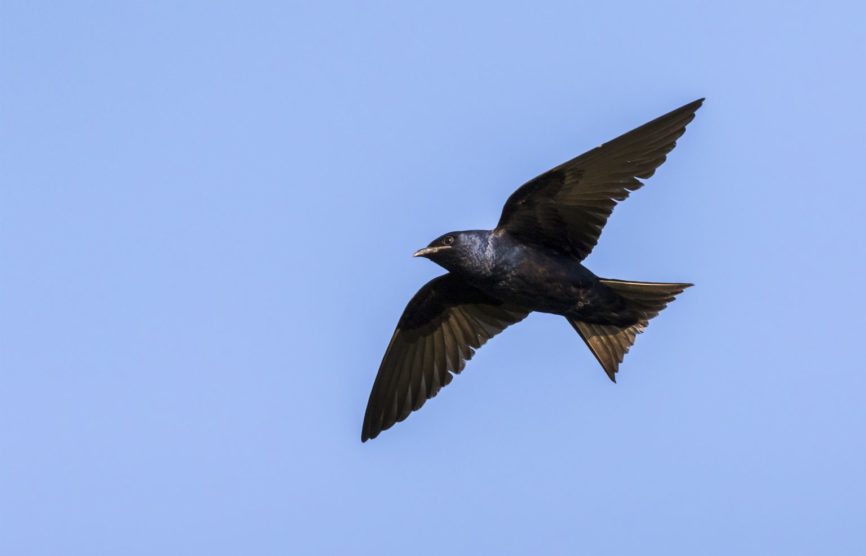
One of the most common birds on the Outer Banks, it takes a quick eye to see a Purple Martin. Very fast and acrobatic flyers, their appetite for insects is legendary. They feed 100’-150’ above the surface, then will dive for a drink, taking a sip as they skim over water, then rise again to feed.
They are a colonial species, meaning they gather in large colonies for breeding and safety. Every year somewhere around 100,000 of them gather at the old Umstead Bridge on the north end of Roanoke Island to spend the spring and summer. Early in the morning they leave in a massive wave, and return to roost as the sun sets.
Purple Martins are a highly migratory species, wintering in South America.
Yellow-rumped Warbler
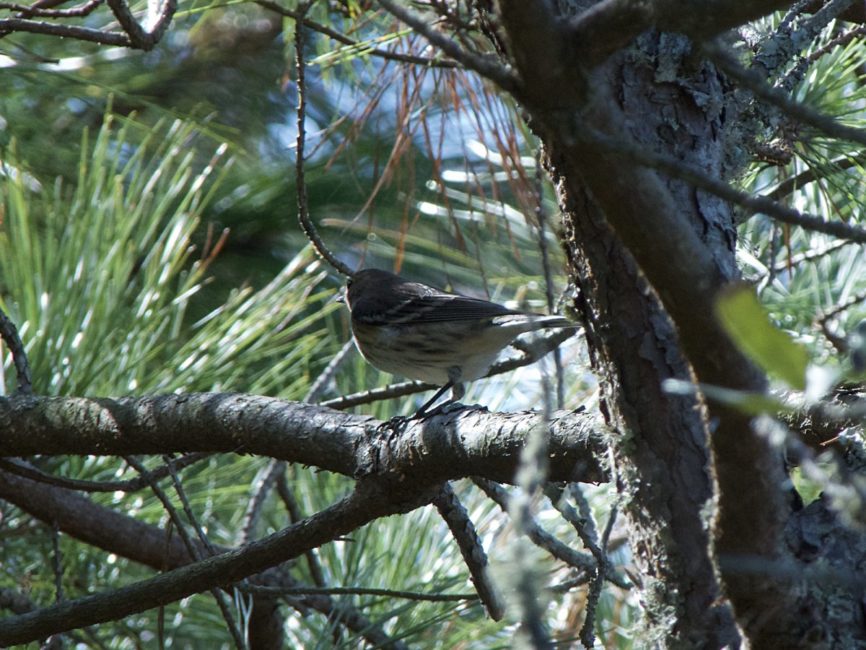
A colorful and fairly common bird, the Yellow-rumped Warbler, is seen more often in the fall and winter on the Outer Banks. Favoring wooded areas, especially evergreen trees, best chance of seeing one is in one of the Outer Banks nature reserves, especially along the edge of a wetland.
Their song is a high-pitched chirrup.
Look for yellow toward the tail feathers with a gray head interspersed with white.
Other Songbirds
There are so many songbirds that are a regular part of Outer Banks life that we couldn’t include them all.
Crows are ubiquitous on the Outer Banks, although it’s hard to think of their raucous caw as a song.
Boat-tailed grackles are often seen on the beach. The male is a black bird but does not have the iridescent colors of a crow. The female is brown. Common grackles, which have more of a brownish tinge to their feathers are also quite common on the Outer Banks. Grackles are a larger bird, but clearly smaller than a crow. Like the crow, no one would ever consider their sound songlike.
There are also catbirds, a gray shaded bird that can make a sound surprisingly similar to a cat. The mockingbird looks somewhat like the catbird, but there is a bit more brown in its coloration and some white in the feathers. A very territorial bird, Mockingbirds are fearless and will try to chase anything and everything—including humans—away from a nest or favorite feeding area. And yes, they are able to mimic the sound of other birds.
